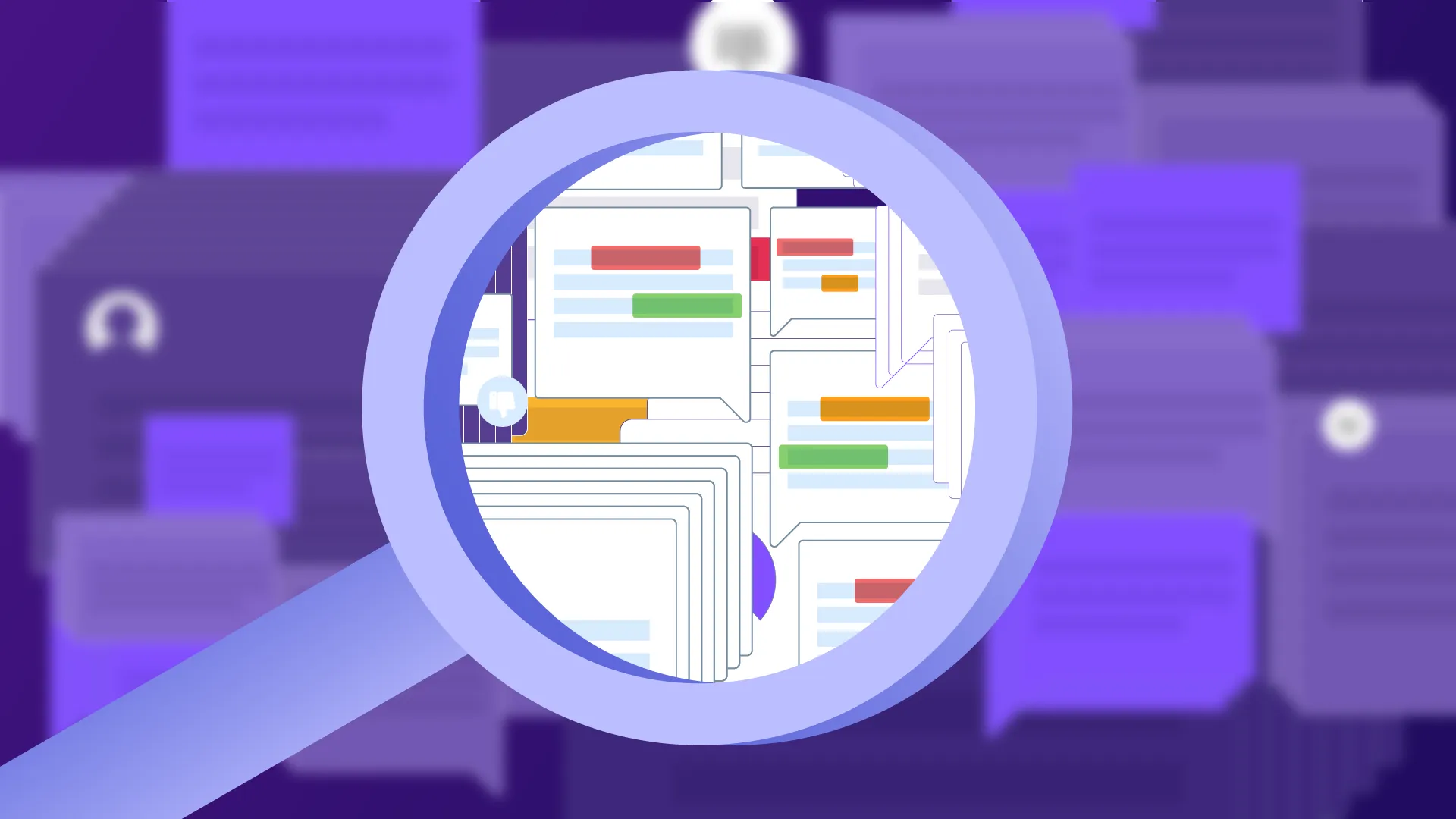
Discover the best text analytics software for 2025, featuring tools for NLP, sentiment analysis, and trend identification.
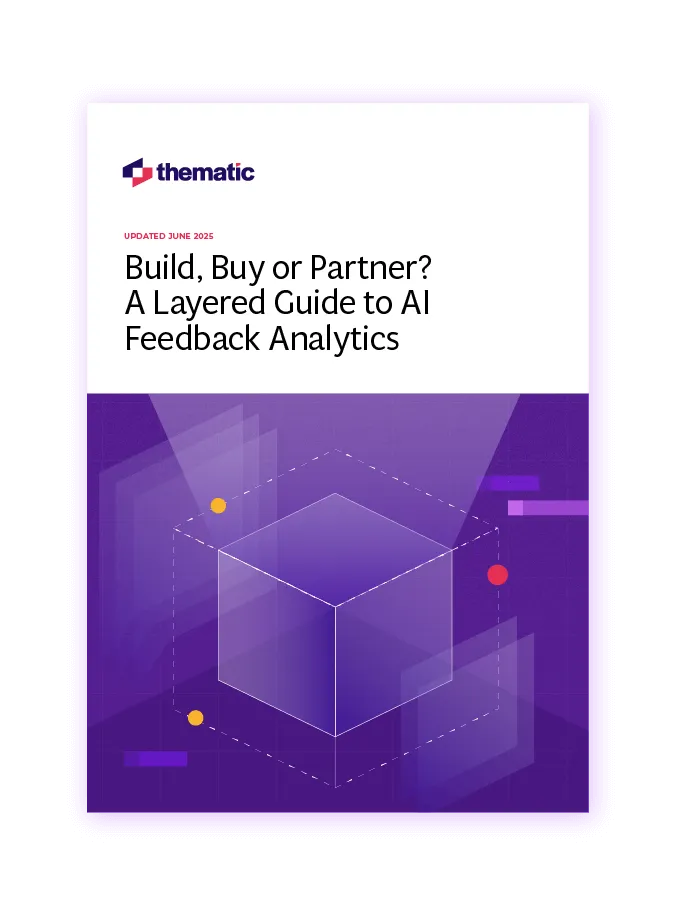
Text analytics software transforms customer feedback into insights you can act on.
Unstructured data (customer reviews, support emails, social media comments) makes up 80% of enterprise data. Without the right tools, that potential sits untapped.
The best text analytics platforms turn chaos into clarity. They help you understand what customers are saying and why it matters.
For enterprise research and insights teams managing thousands of feedback sources, the challenge isn't just volume. It's finding a solution that delivers both speed and rigor—one that doesn't sacrifice transparency for automation or force you to trust black-box AI.
This guide examines eight text analytics platforms and shows you how to choose one that fits your needs. We'll cover what makes text analysis work, which features matter most, and how leading companies use these tools to drive decisions.
The right text analytics tool should make complex analysis accessible while delivering results you can trust.
A user-friendly interface matters. Not everyone on your team has a data science background. The best tools let non-technical users analyze feedback without getting overwhelmed. If your CX team can't use it independently, you'll create a bottleneck.
Real-time processing changes how you respond. When you can spot trends and concerns as they happen (whether in social media feedback or survey results), you act faster. This matters especially for trend identification when timing drives impact.
Integration across data sources brings everything together. Your feedback lives in CRM systems, support tickets, surveys, and review sites. Tools that handle qualitative data analysis across all these sources give you the complete picture. No more siloed insights.
Customizable outputs let you tailor results to your goals. Want to understand recurring themes? Track customer sentiment over time? A flexible analytics platform ensures you get answers to your specific questions, not generic reports.
Scalability keeps pace with growth. As your business expands, so does feedback volume. The best tools leverage natural language understanding (the AI's ability to interpret meaning from text) and advanced AI to extract actionable insights from unstructured text data efficiently. They grow with you instead of breaking under pressure.
Finally, transparent methodology builds trust. When you present insights to executives, you need to explain how you reached your conclusions. Research-grade tools show their work rather than hiding behind black-box algorithms.
Text analytics requires sophisticated technology, and not all solutions deliver equal results. You could consider building an in-house solution, but that takes considerable time and resources.
Choosing the right tools makes the difference between drowning in feedback and using it strategically. The best text analytics software demonstrates why text analytics is important for understanding customers and making smarter decisions.
As you review these platforms, keep your core needs in mind. Each tool takes a different approach to analyzing feedback—some prioritize automation, others emphasize control, and a few offer unique capabilities that might match your specific challenges.
Thematic is an enterprise feedback intelligence layer that sits on top of your existing CFM tools like Medallia and Qualtrics. Unlike all-in-one platforms that try to replace your current systems, Thematic integrates with what you already use (adding transparent, research-grade analysis without forcing you to migrate).
For research and insights teams managing substantial feedback volumes, the platform solves a specific problem: getting fast, trustworthy insights without sacrificing analytical rigor. Thematic uses AI-powered theme discovery to identify patterns automatically, then gives you transparent control to refine, validate, and audit every insight.
This human-in-the-loop approach differentiates Thematic from black-box AI competitors. You see exactly how themes are built. You can edit them. You can defend your findings to executives because the methodology is auditable and defensible.
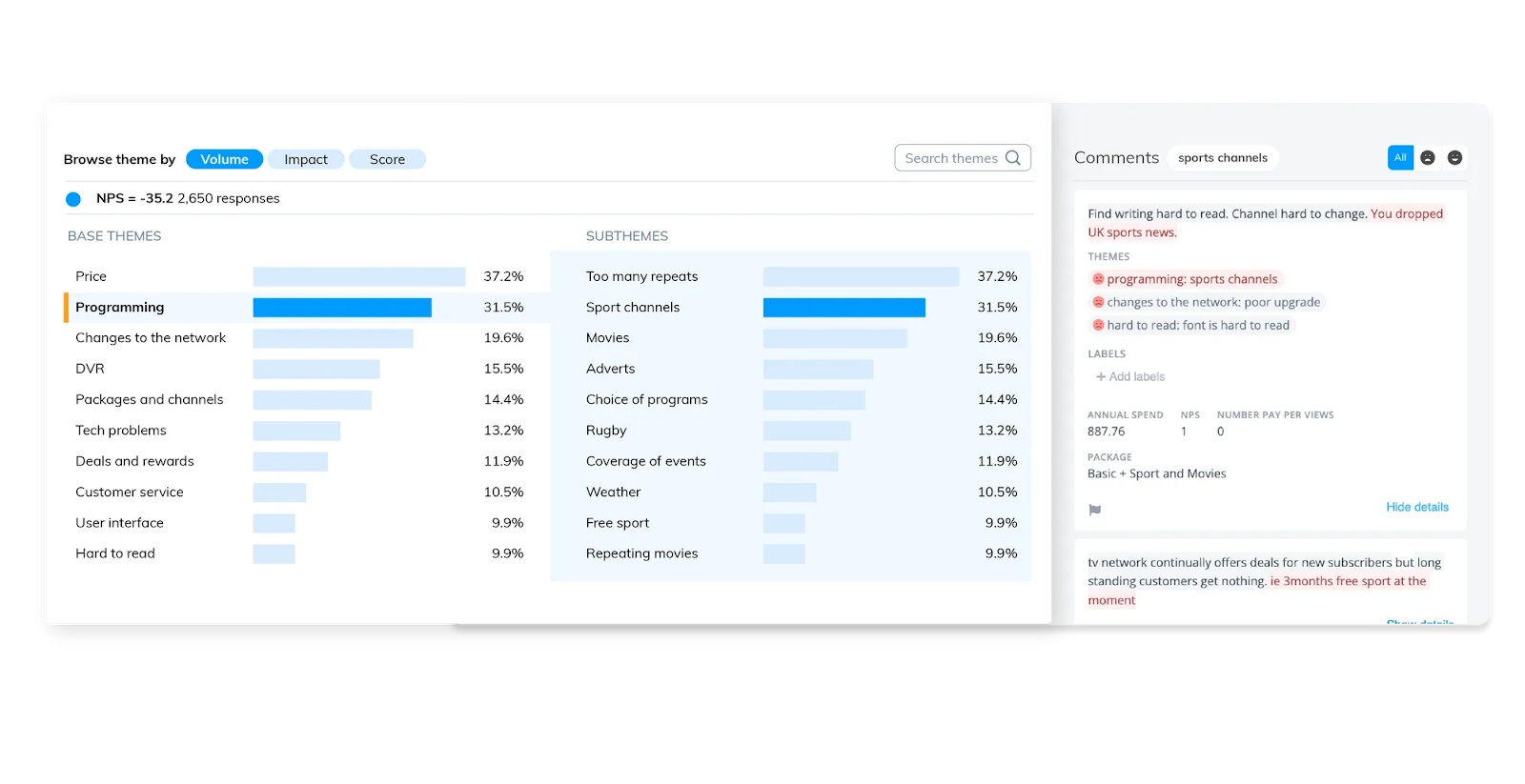
Text analytics approach:
Thematic uses Natural Language Processing to automate sentiment analysis and thematic analysis. The algorithm learns independently without requiring pre-defined categories or annotated training data. This bottom-up approach means it can identify both known patterns and emerging themes you didn't expect.
The themes model stays flexible and editable. It's designed to improve with human input. You can add, merge, or delete themes to ensure insights remain specific and actionable (maintaining research-grade standards while benefiting from AI speed).
Setup time: Usually 2-7 days from data connection to first insights.
Supported data sources: Internal feedback (surveys, contact center, support tickets, complaints, CRM notes) and external sources (review sites, forums, social media). Thematic offers native integrations with continuous data pulls, an API for custom connections, CSV and sFTP support, plus assistance with custom integrations.
Ease of use: Intuitive interface designed for the whole company. No data science degree required. Customizable roles and permissions mean everyone accesses the insights they need. Tailor views for product, CX, operations, and executive teams in minutes, with customer success support always available.
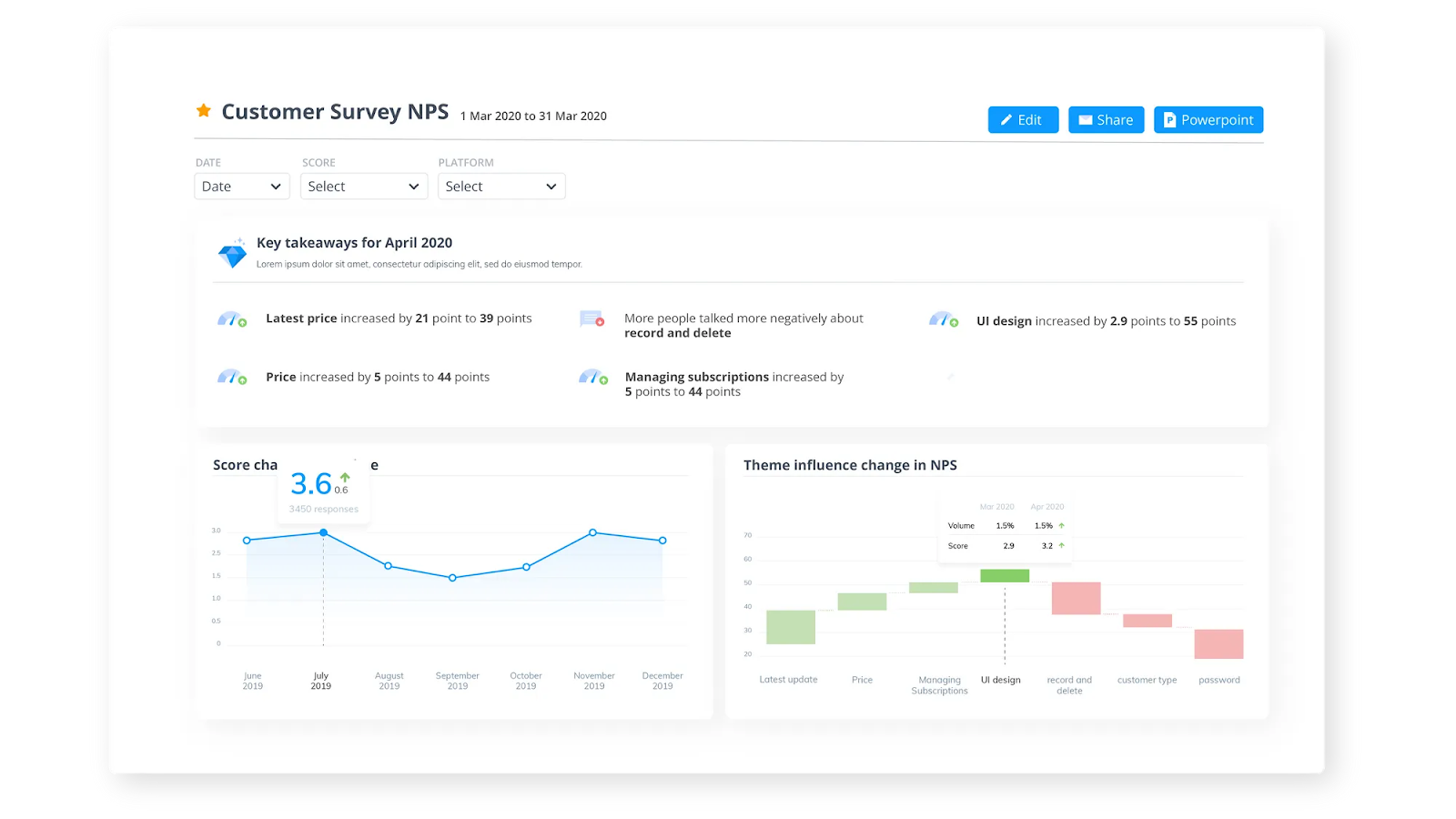
Learn more about Thematic's functionality and explore how transparent text analytics delivers defensible insights for enterprise teams.
RapidMiner is a comprehensive text analysis platform designed for data scientists and analysts who need flexibility. The tool handles both structured datasets and unstructured feedback, letting you work seamlessly across emails, customer comments, and database records.
RapidMiner's strength lies in its versatility. If you have technical resources and need a tool that adapts to complex, varied analysis requirements, this platform delivers the flexibility to handle whatever you throw at it.
Chattermill focuses specifically on making customer feedback analysis straightforward. By using predefined taxonomies and AI, it helps businesses extract meaning from surveys, support logs, and social media reviews quickly.
With strong natural language understanding capabilities, Chattermill goes beyond surface-level analysis. It helps companies understand what's driving customer satisfaction—or frustration—so they can make targeted improvements.
Kapiche takes a different approach by eliminating predefined taxonomies entirely. This AI-driven platform lets you explore customer data freely, discovering patterns without the constraints of fixed frameworks.
Kapiche's flexibility appeals to businesses that value discovery. If you want to let the data tell its own story rather than fitting feedback into predetermined boxes, this tool provides that freedom.
Lexalytics combines powerful natural language processing with customizable features to help businesses dig deep into text data. Whether you're analyzing product reviews, customer surveys, or support logs, the platform transforms raw feedback into clear insights.
Lexalytics' focus on NLP depth ensures you understand both what customers say and how they feel about it. The customizable approach makes it particularly strong for specialized industries with unique terminology.
Google Natural Language AI offers a robust solution for analyzing unstructured data. Built on advanced NLP technology, it combines pretrained models for quick implementation with customization options for specific needs.
Google Natural Language AI excels at trend identification, helping businesses spot patterns and emerging themes in their data. Whether you're performing sentiment analysis or categorizing text, this tool's flexibility supports various workflows efficiently.
MonkeyLearn is a low-code platform that makes text processing accessible to everyone. Whether you're a data expert or someone analyzing feedback for the first time, this tool simplifies extracting insights from unstructured data.
MonkeyLearn balances simplicity with functionality. Its machine learning models ensure accurate text processing while the low-code design means teams can start analyzing feedback without steep learning curves.
Qualtrics XM Discover is an all-in-one platform designed to unlock deep customer experience insights. By analyzing feedback from surveys, support tickets, and social media, it transforms raw input into strategic actions.
With strong natural language understanding capabilities, Qualtrics XM Discover helps teams understand customer needs across all channels. Whether analyzing social media conversations or internal feedback, this tool brings clarity to complex data.
Define your business goals first, then evaluate tools based on budget, scalability, and integration needs.
Are you trying to improve customer satisfaction? Track emerging trends? Address specific pain points? Your objectives determine which features you actually need versus nice-to-haves.
The big data and analytics market is projected to reach $693 billion by 2032, reflecting how businesses increasingly turn data into action. Choosing the right platform matters more than ever.
Choose a tool that fits your current resources but can grow with you. A platform that works today but breaks under increased volume next year creates more problems than it solves.
Assess your data sources and integration requirements carefully. Consider what types of feedback you'll analyze (surveys, emails, social media, support tickets). Look for tools that integrate seamlessly with your existing systems rather than forcing you to work around limitations.
This reveals how effectively each tool provides insights and whether it truly meets your requirements. Theory matters less than actual performance with your specific feedback.
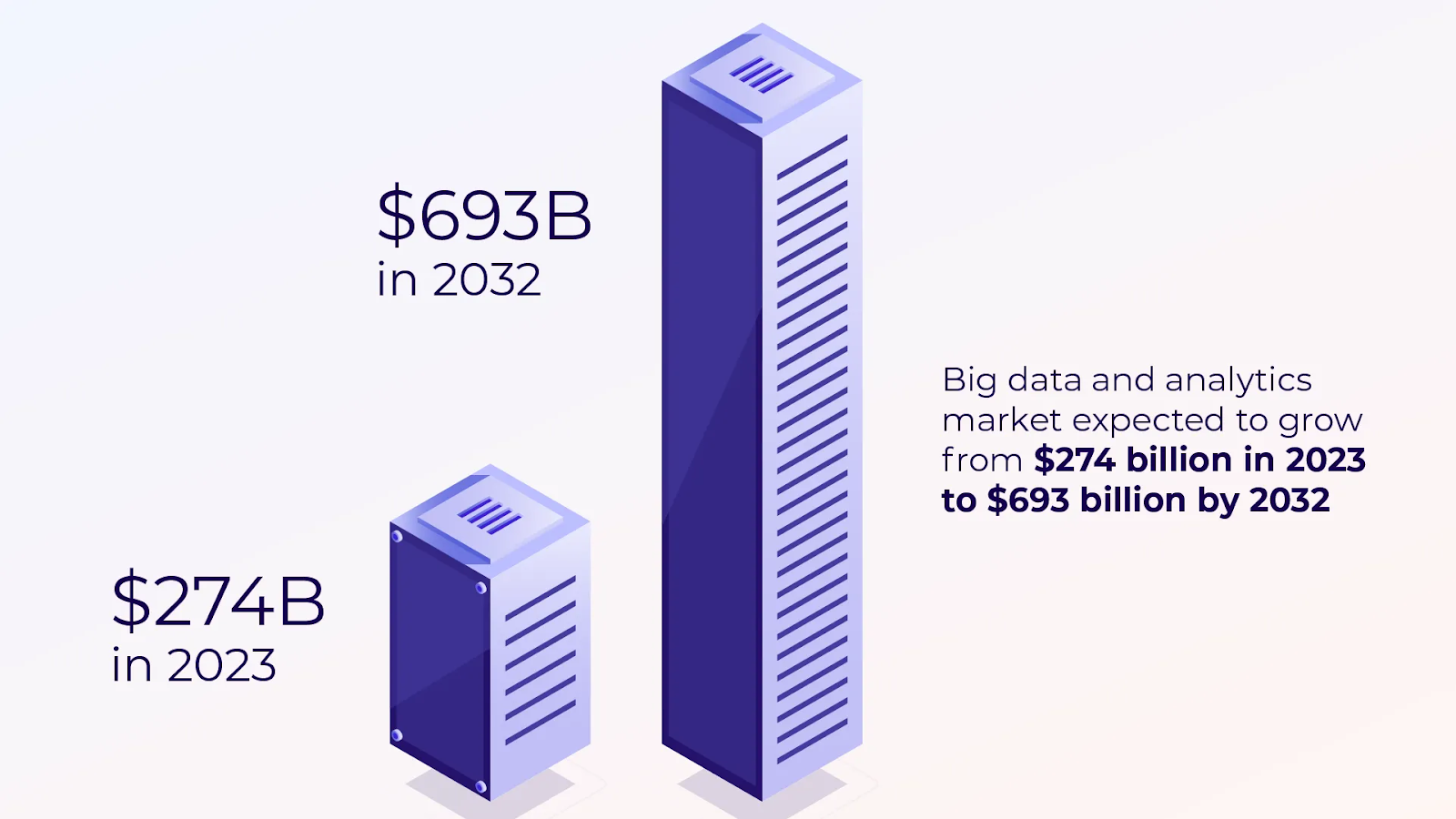
Text analytics has become essential for businesses aiming to understand customers better. By analyzing social media data, reviews, and surveys, companies unlock insights into what drives satisfaction and improvement.
This is why thematic analysis software has become critical for organizations harnessing text analysis to make smarter decisions. The examples below show why text analytics matters for understanding customer needs and staying competitive.
Vodafone used text analytics to process customer feedback efficiently, identifying key pain points and addressing them proactively. By focusing on trend identification in customer interactions, Vodafone improved satisfaction across customer-facing teams.
Read more in the Vodafone Case Study.
DoorDash utilized Thematic to analyze social media reviews and other feedback channels, uncovering trends in customer sentiment. These insights helped refine product offerings, ensuring they stayed aligned with customer expectations.
Explore the full story in the DoorDash Case Study.
Instacart demonstrated the power of text analysis by using advanced tools to streamline feedback loops. They leveraged insights from unstructured data to make quick, impactful changes to their services.
Learn more about their journey in the Instacart Case Study.
Choosing the right text analytics software transforms how your business understands customer feedback. With the right tool, you uncover trends, analyze social media data, and turn unstructured input into meaningful actions.
The platforms in this guide represent different approaches to text analysis. Some prioritize automation and speed. Others emphasize transparent control and research-grade rigor. The best choice depends on your specific needs (whether you're looking for an enterprise feedback intelligence layer that sits on top of existing tools or an all-in-one platform that handles everything).
For research and insights teams managing substantial feedback volumes, transparent methodology matters. When you present findings to executives, you need to explain how you reached your conclusions. Tools that show their work (that let you edit, validate, and audit insights) build the trust required for confident decision-making.
Ready to experience the difference? Try Thematic with your own data and see how transparent, research-grade analysis with human-in-the-loop control transforms feedback into defensible insights.
Thematic is an enterprise feedback intelligence layer that sits on top of CFM tools like Medallia and Qualtrics, providing transparent AI analysis without replacing your existing systems. It delivers research-grade insights with human-in-the-loop control, making analysis auditable and defensible for executive reporting.
Thematic gives research teams transparent control to edit, refine, and validate AI-generated themes using an intuitive Theme Editor. Unlike black-box tools, you see exactly how themes are built and can adjust them to maintain research-grade standards while benefiting from AI automation.
Look for platforms that show their methodology and let you validate results. Thematic combines automated theme discovery with editable themes—you control how insights are generated, making analysis transparent and defensible. The platform learns from your refinements while maintaining full visibility into how themes are created.
Traditional text analytics platforms aim to replace your existing tools with all-in-one solutions. Enterprise feedback intelligence layers like Thematic integrate with what you already use—CFM tools, CRMs, survey platforms—adding transparent, research-grade analysis on top without forcing migration or disrupting current workflows.
Yes. Thematic is designed as a feedback intelligence layer that sits on top of existing CFM platforms. It connects seamlessly with Medallia, Qualtrics, CRMs, survey tools, and contact center systems, pulling data continuously without disrupting your current setup or requiring data migration.
Thematic delivers research-grade text analysis by combining automated theme discovery with human-in-the-loop oversight. Analysts can edit, merge, or delete themes through the Theme Editor, maintaining the rigor of manual analysis while leveraging AI speed. This makes insights auditable and defensible for executive reporting.
Choose platforms that provide transparent methodology and let you validate every insight. Thematic shows exactly how themes are built, lets you refine categorizations, and maintains full audit trails. This combination of AI automation with human validation creates defensible analysis you can confidently present to executives.
Setup time varies by platform. Thematic typically takes 2-7 days from data connection to first insights. This includes integrating with your existing systems, configuring theme models, and customizing dashboards. More complex implementations with multiple data sources might take up to two weeks.
The best platforms analyze both internal feedback (surveys, support tickets, CRM notes, contact center logs) and external sources (review sites, social media, forums). Thematic supports all these sources through native integrations, API connections, CSV uploads, and sFTP. Customer success teams help configure custom integrations as needed.
Not with user-friendly platforms. Thematic is designed for research and insights teams without requiring data science backgrounds. The intuitive interface lets CX professionals, analysts, and executives access insights independently. Customizable roles ensure everyone sees relevant analysis without navigating complex technical configurations.
Join the newsletter to receive the latest updates in your inbox.